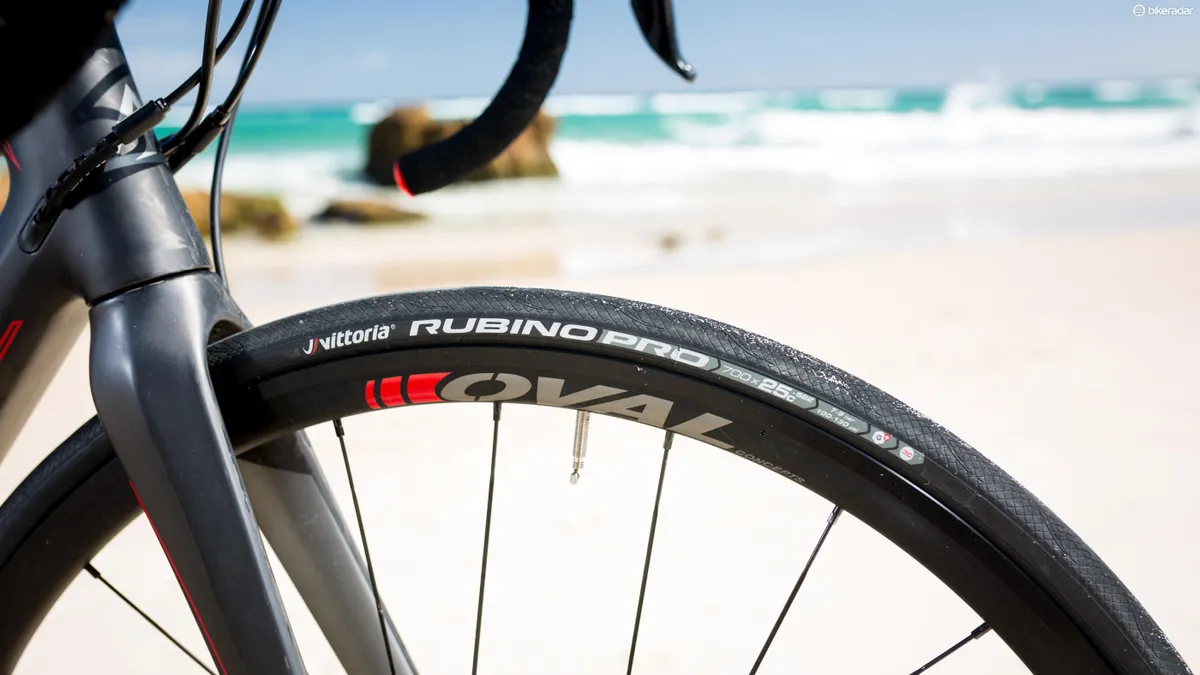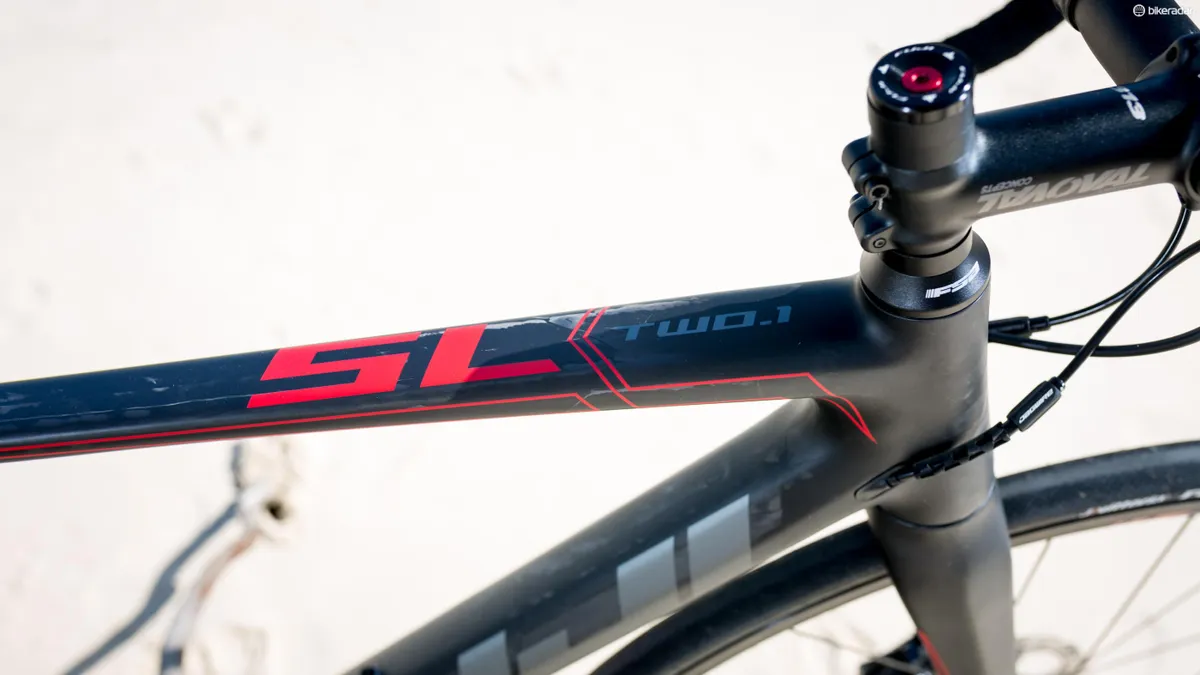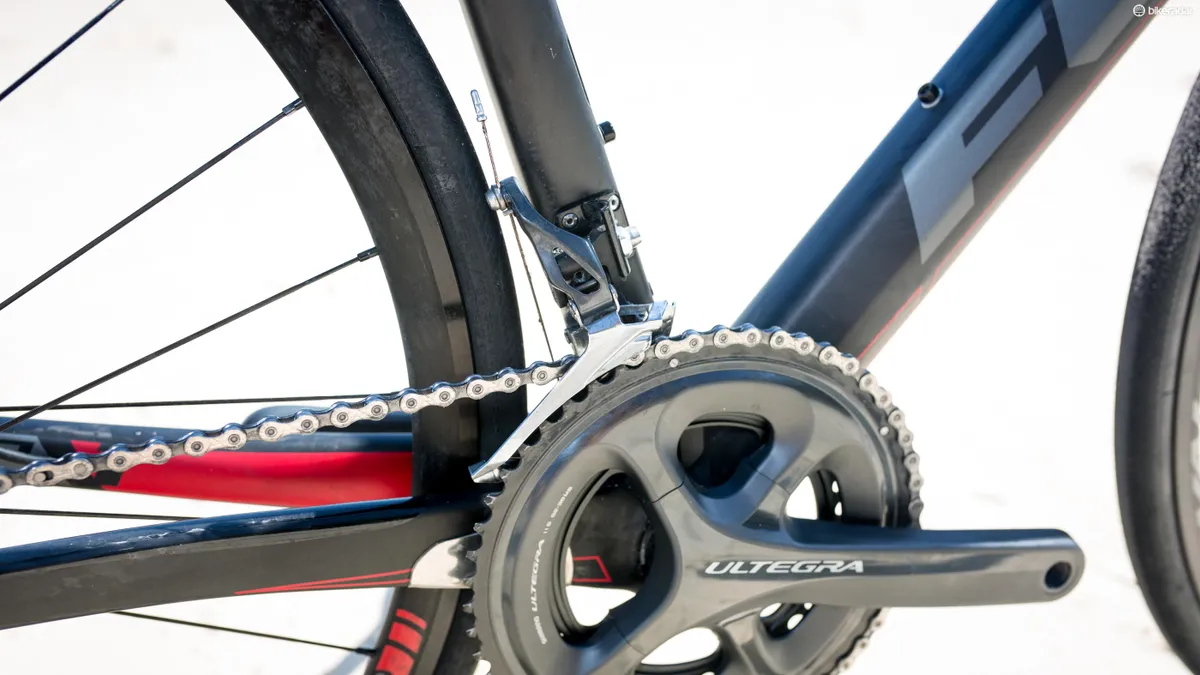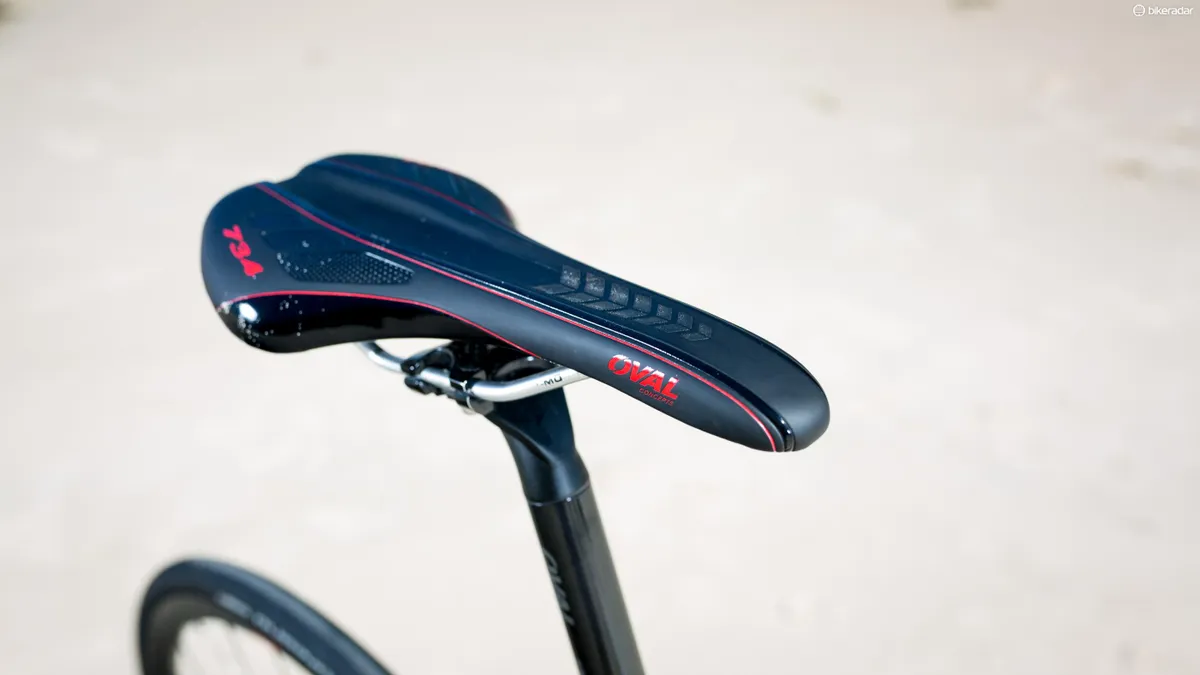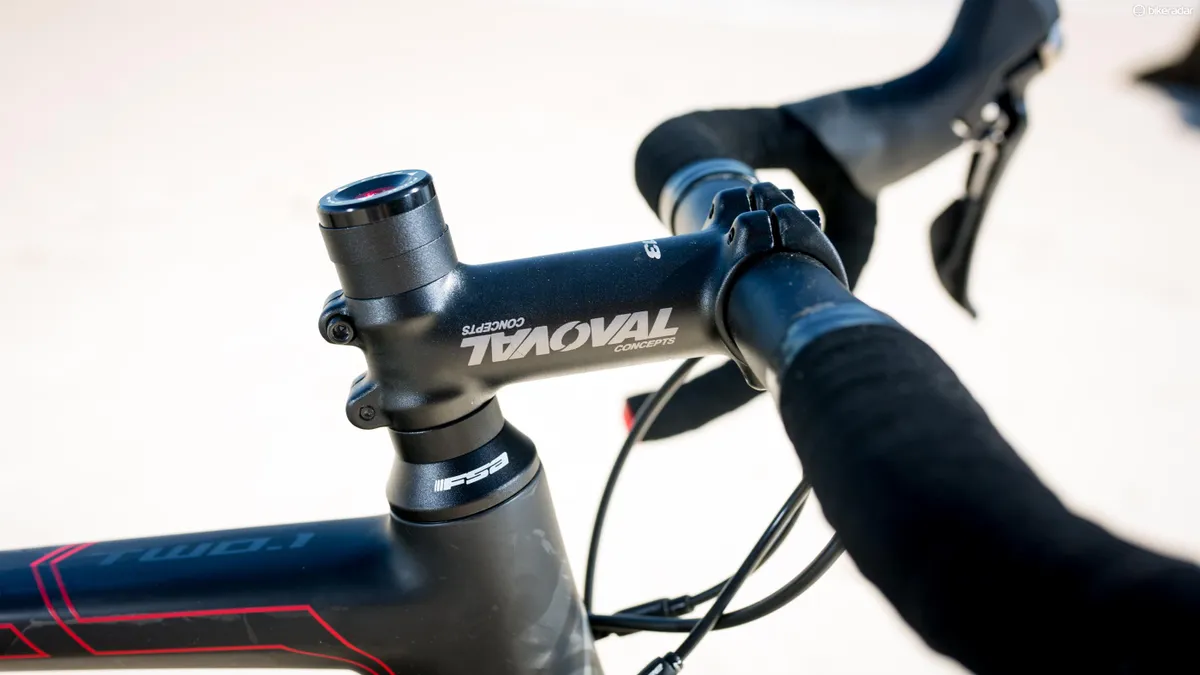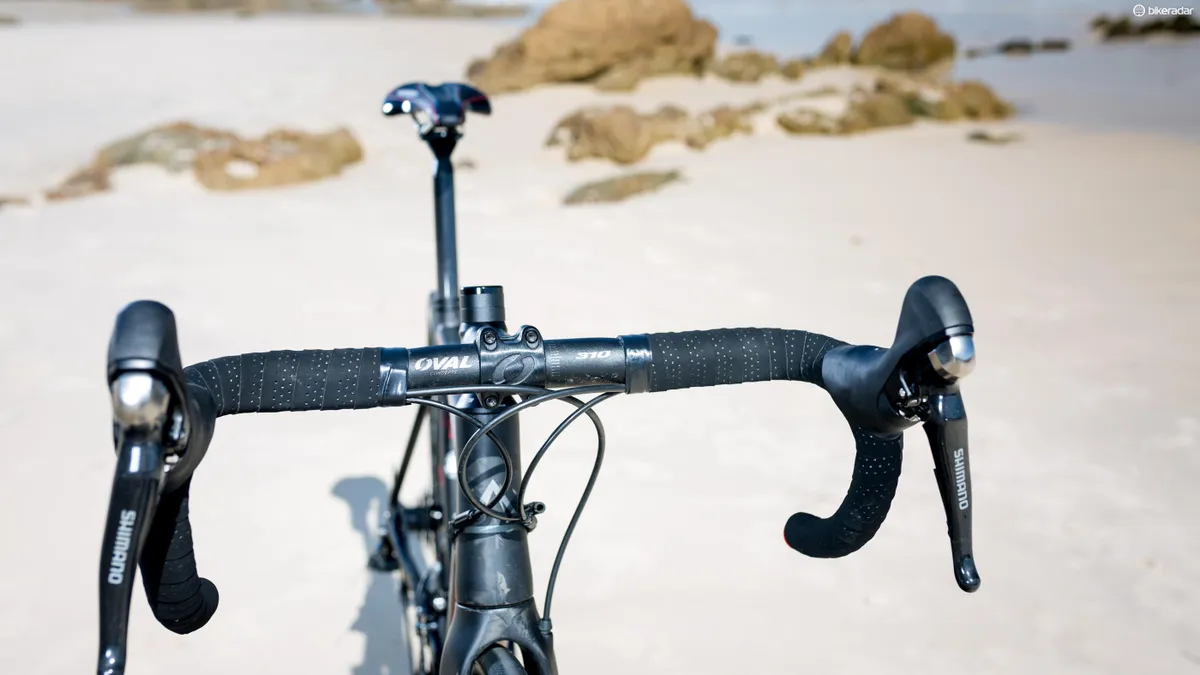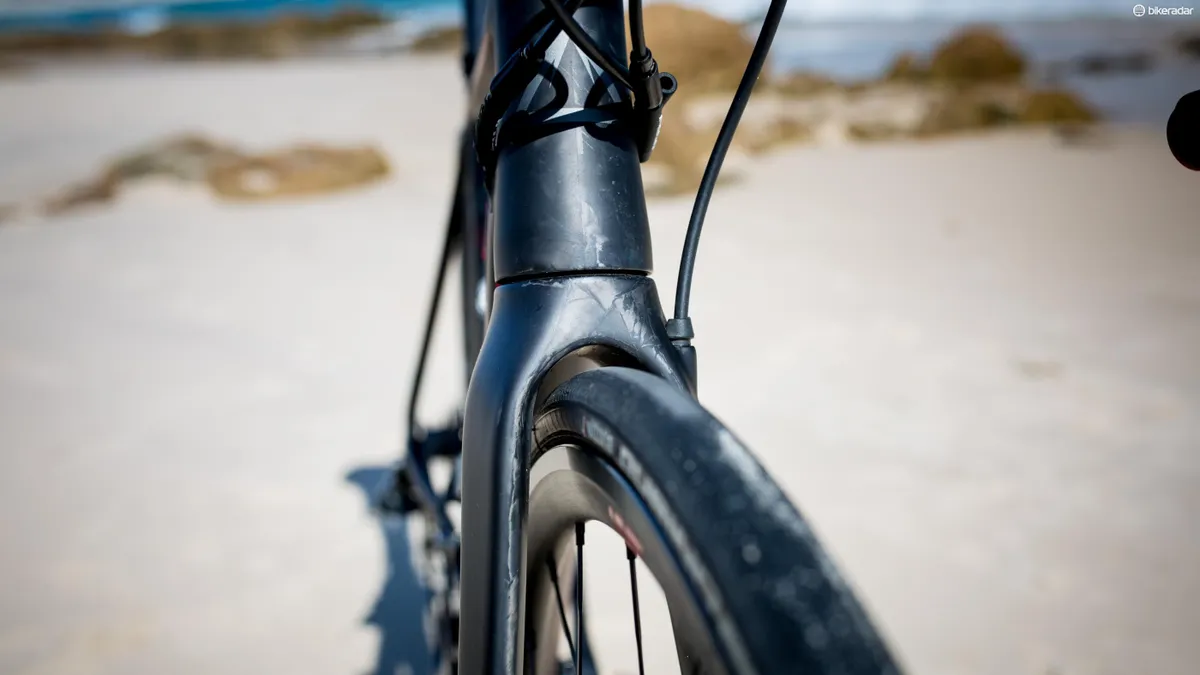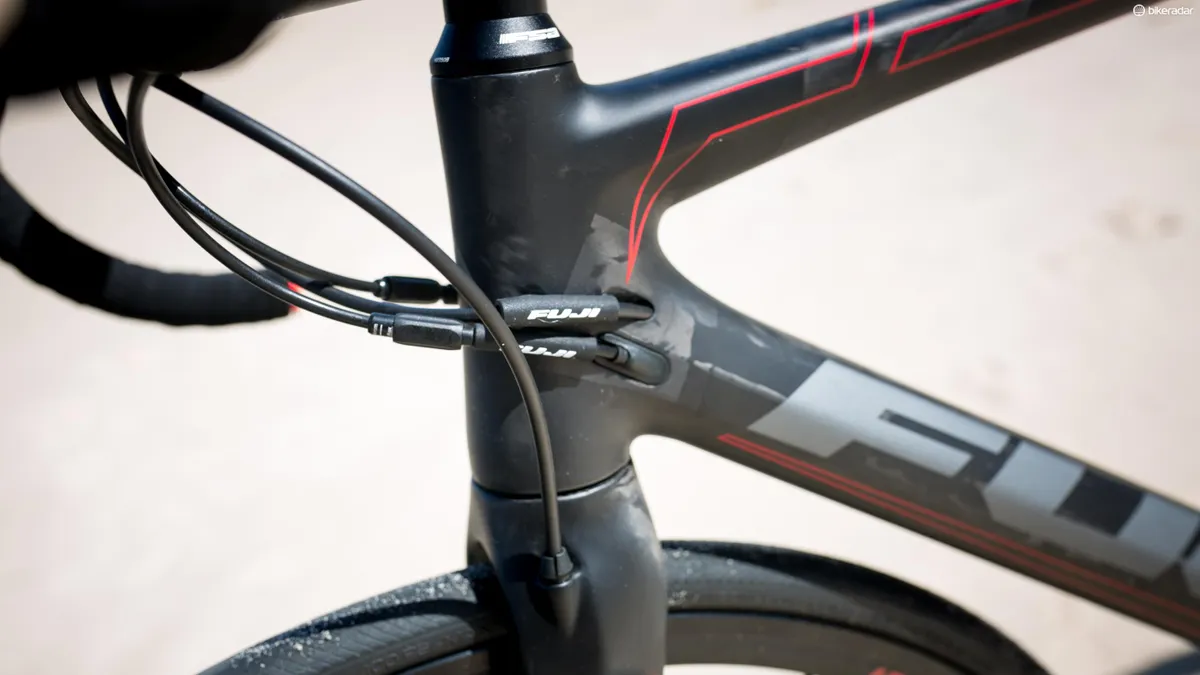The quest for the ultralight road bike seems to be never ending, and with each new release, brands are continually trying to shed weight while still making a high-performance frame that doesn’t ride like a wet noodle. Fuji's SL platform launched a few years ago with some almost unbelievable weights associated with complete builds and has proven to fall into the wow category, but will the 2.1 Disc compare?
I've tested the top-tier SL 1.5 and mid-range SL 2.1 before, with both earning almost perfect scores for their combination of aggressive geometry, smart spec, exciting ride character and of course numbers on the scale.
Now, Fuji has added discs to the SL platform in an effort to bring the advantage that discs offer to its ultralight frames.
It's porky
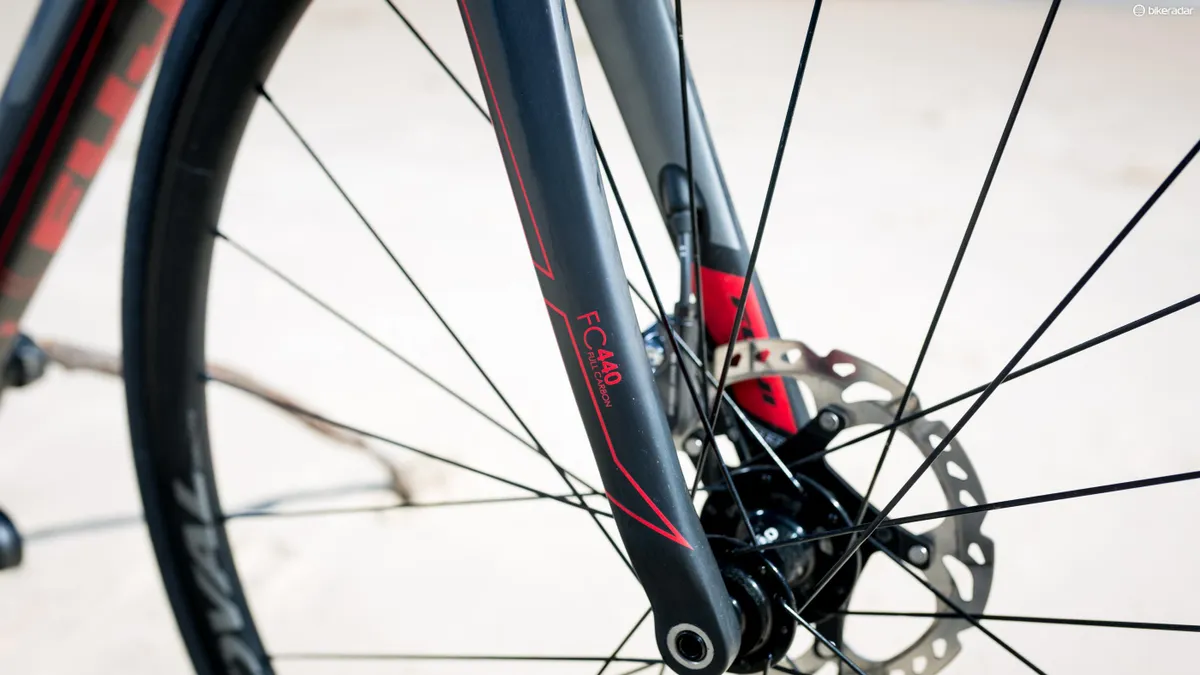
Adding discs isn’t as simple as bolting them onto a standard frame, more material is required to withstand the additional forces from the brakes, and more material means more weight.
The top-tier SL Disc 1 Series frame is said to weigh 900g vs. the rim brake frame at 690g. While Fuji doesn’t offer a claimed frame weight for the 2 Series frames, my medium SL 2.1 Disc tipped the scales at 8kg / 17.63lbs — the SL 2.1 with rim brakes weighs 7.43kg / 16.38lbs.
Objectively, the SL 2.1 disc is a bit pudgy, but when you compare this with other mid-range, Ultegra spec, disc equipped roadies like Ridley’s new Fenix SL Disc (8.4kg / 18.5lbs), Merida's Scultara Disc 600 (8.46kg /18.65lbs) and BMC’s Roadmachine (8.17kg / 18lbs), it’s actually on the lower end of the spectrum.
The frame itself is made using Fuji’s second tier C10 carbon fibre, and although only the top-end frames receive the brand's High Compaction moulding, the frame does benefit from only having four bonded joints thanks to improved manufacturing techniques that allow the seatstays and chainstays to be made as two one-piece assemblies, rather than four individual parts.
The SL Disc also gets its own version of the I-Beam fork, which sees a reinforcing rib that runs the length of the fork blades in an effort to resist flex, as well as the size specific tube diameters, head tube angle and fork offset to create a standard ride quality and handling characteristic no matter the frame and rider size.
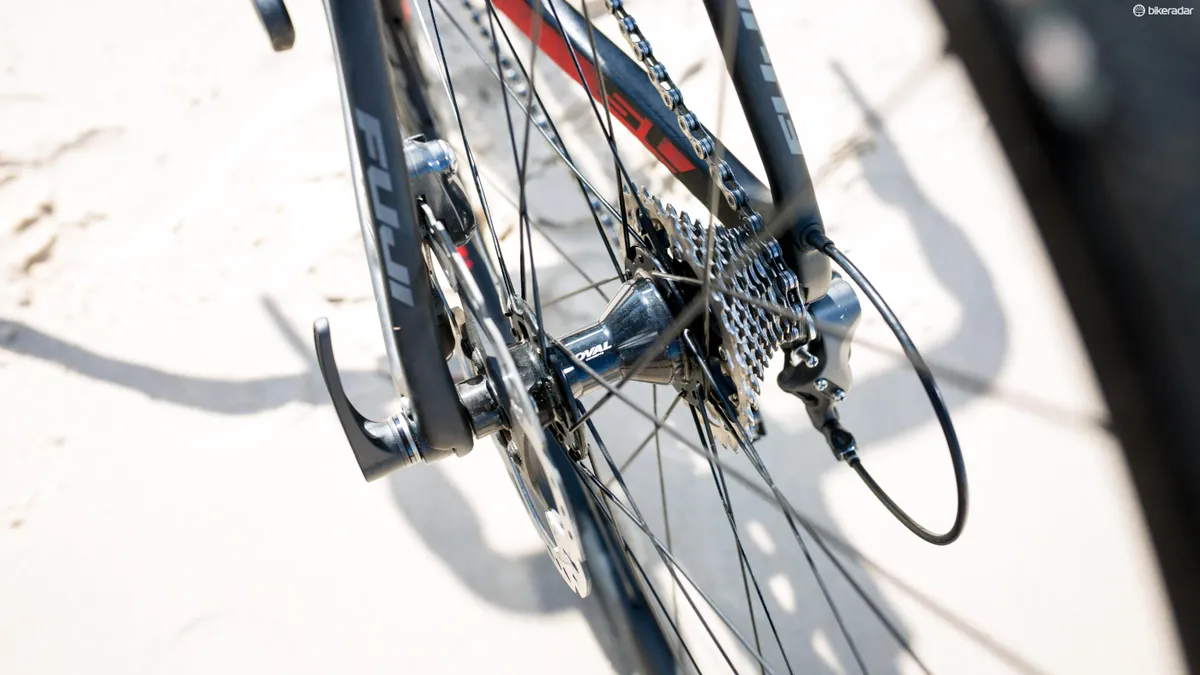
The geometry is almost a mirror image of the rim brake SL, bar the additional 5mm of chainstay length to accommodate the wider disc hub spacing and make for a straighter chain line at either end of the cassette.
The front of the SL Disc sees a 135mm headtube (in a size medium) and allows for a very aggressive position should you be flexible enough — if you’re looking for an upright endurance machine, don’t be fooled by the discs, this is a racer through and through.
The bike also gets front and rear 12mm thru-axles, although the rear dropout is convertible by removing a 5mm bolt on either side you can remove the lower half of the dropout if you’d like to run a QR wheel — the fork doesn't get the same treatment.
So, how does it ride? Almost exactly the same as its rim brake cousin!
The SL Disc is snappy, responsive and begs to ridden at Mach ten. It does lose a bit of the enthusiasm for quick acceleration and changes of speed when compared to the rim braked SL, but that’s no surprise given it’s the better part of a kilo heavier than the rim braked version.
Stiff but not a bruiser
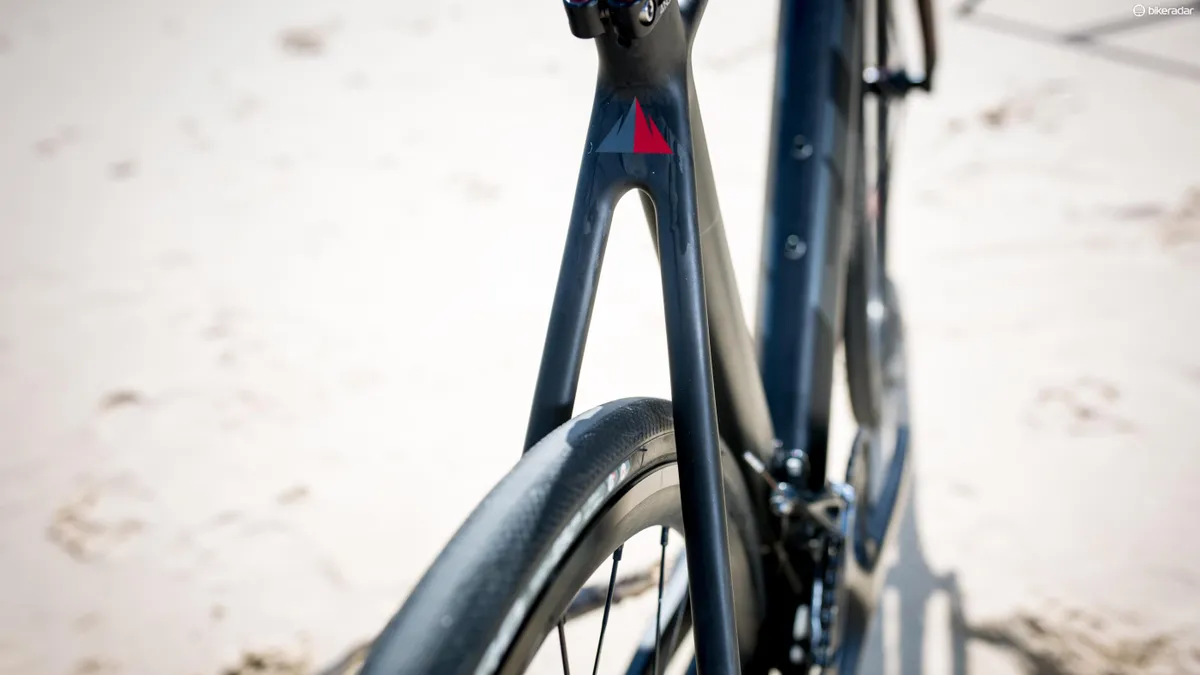
At the front, the SL’s I-Beam reinforced fork allows for laser precision steering, and in combination with the 73-degree head angle means only the lightest steering input is needed to initiate a turn or make mid-corner adjustments.
One advantage to the additional weight is the bike feels a bit more planted when going down hill, eliminating the slight skittishness I noticed on the lighter rim brake version.
There is no question this frame is stiff and there is no obvious power lost due to flex, but there are a few modern frames out there that are just too stiff, meaning they leave your body beaten and battered after a few hours on the road. The SL Disc isn't one of these and the pencil thin seat stays do a fantastic job of taking the square edge off of big bumps while the carbon seat post takes care of a good bit of the nasty high-frequency road vibrations — though the 25c Vittoria Rubino Pro tires also bear some of the brunt.
Given that the SL Disc is designed around a racing platform, the bike does still transmit some feedback from the road to the contact points, but having an idea of the road surface and what’s going on down there is important on a bike like this, and the added road feel gives you a sense of added control over the bike.
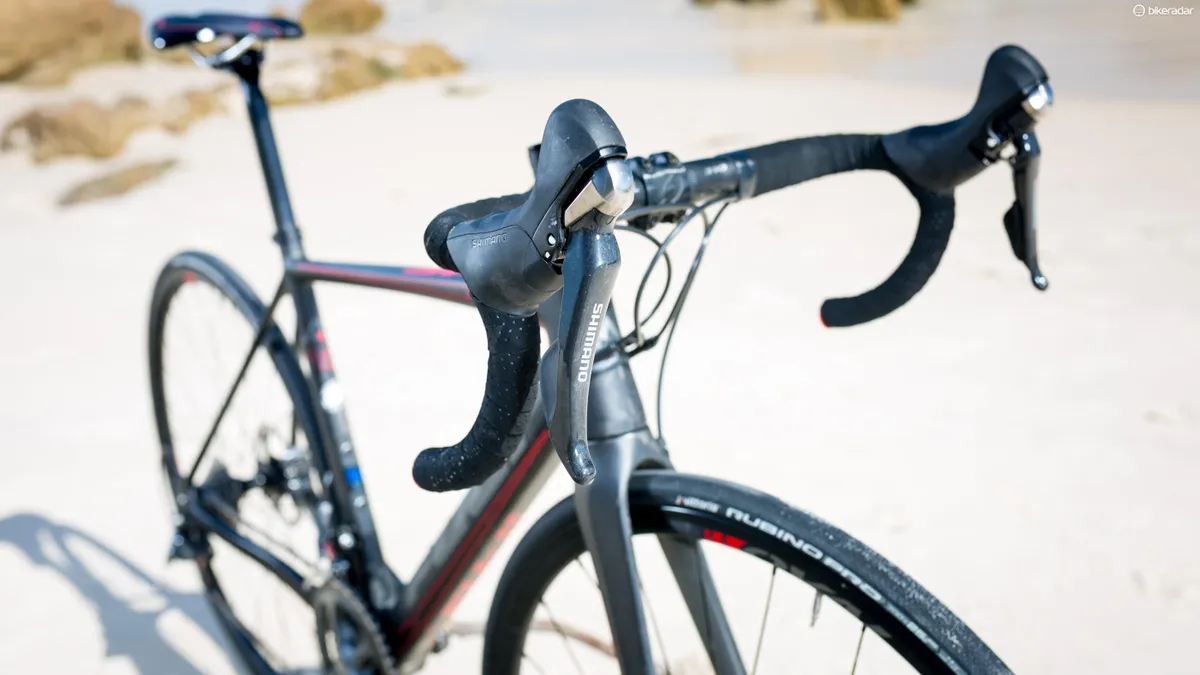
Spec’d with an Ultegra drivetrain, the SL 2.1 gets Shimano R-685 shifters to accommodate the Shimano R-805 hydraulic brake set. While these shifters aren’t technically branded “Ultegra” they’re commonly chosen on bikes at this price point and look almost identical to the branded shifters, except for the extra real estate on top of the hoods to house the hydraulics.
This mid-range drivetrain is, as usual a workhorse and didn’t miss a step, providing crisp and quick shifts even when caked with road grime from hours of wet weather riding. The 52/36t chainrings and 11-28t cassette provided for plenty of range either end of the spectrum and rarely left me wishing for another gear.
It never ceases to amaze me the modulation and control on offer from road disc brakes, and the flat mount R-805 hydraulic brakes combine with 160mm rotors front and rear to provide confident one-finger braking in all weather conditions. (The spec sheet lists a 140/160mm rotor combo, however my test sample had two 160mm rotors)
It’s the wet season here in Australia and on the Gold Coast we’ve had pretty much nothing but rain since this bike arrived (contrary to what the photos show), and the consistent braking no matter the weather has been much appreciated. What's better, the Shimano hydro setup requires almost no maintenance, and shouldn't for some time.
Fuji has also opted for 12mm thru-axles front and rear which not only removes any faff with wheel and brake adjustment, but also stiffens the bike from end to end — here the SL disc is noticeably more resistant to twisting than the rim brake SL and something larger riders will definitely appreciate.

The Oval Concepts 527 Disc wheels aren’t particularly lightweight, but have a moderately aero shape and pair well with Vittoria Rubino Pro 25c tires, spreading the casing out to 28mm.
Officially Fuji says the frame will clear up to 28s, though I think you might even be able to squeeze a 29 or 30 in depending on the tire. With Vittoria's G+ Graphene infused compound the Rubino Pros roll along nicely and are surprisingly tough. There have been a couple of occasions in the past few weeks where I've actually heard broken glass crunch under the tire, and roll away without a flat.
When it comes to the rest of the spec, the finishing kit comes from Fuji’s in-house brand Oval and the only thing of note is the saddle, which for me was terribly uncomfortable, providing a unique brand of torture to my bottom — it was swapped out after the first ride. However, given that saddles are extremely personal, the Oval 734 might just be what the doctor ordered for someone else.
The verdict
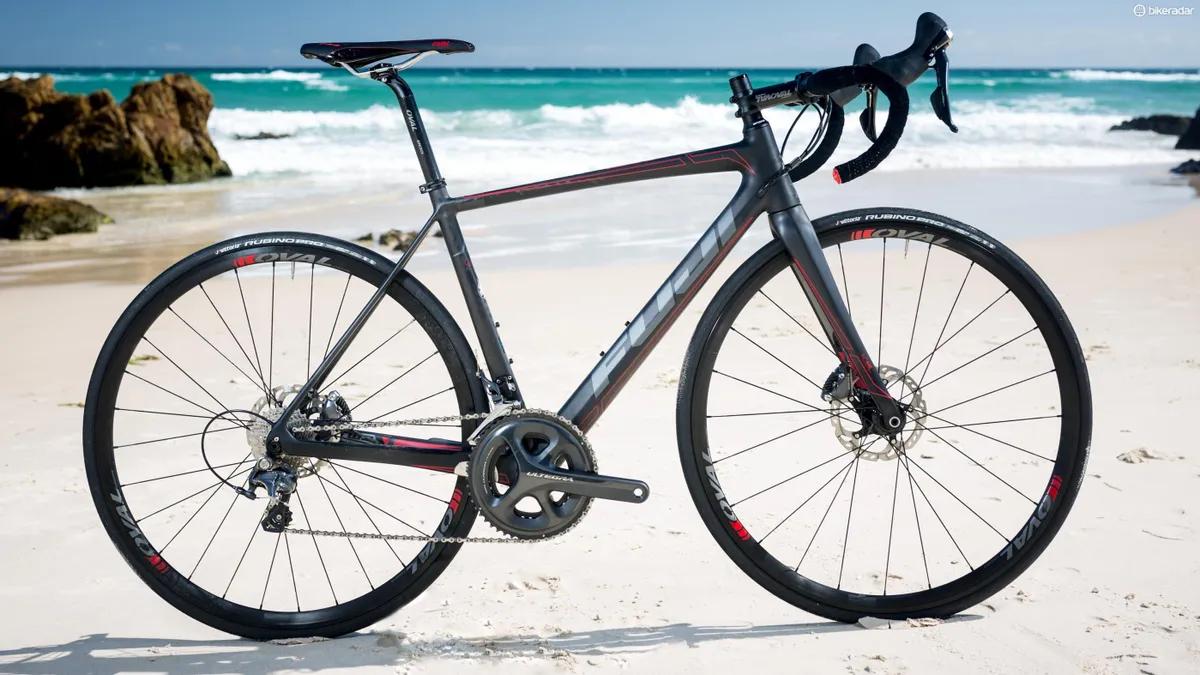
The rim braked SL is one my favourite bikes to ever roll through the doors here at BikeRadar and I was genuinely sad to pack it up and send it back once the review was written. It’s always scary testing a variation of a bike you love, because there is the possibility it may not live up to your expectations.
Luckily, the Fuji SL 2.1 Disc did not disappoint. It’s heavy, there is no getting around that fact, but the SL Disc still retains the character of the rim brake version. It’s aggressive, it’s fast and it just wants to be ridden like you stole it.
Fuji SL 2.1 Disc specifications
- Sizes: XS, S, M, L, XL, XXL
- Fork: FC-440 carbon monocoque w/ tapered carbon steerer
- Chainset: Shimano Ultegra 6800, 52/36T
- Bottom bracket: Praxis conversion bottom bracket
- Cassette: Shimano 105, 11-28T, 11-speed
- Chain: KMC X11, 11-speed w/ MissingLink
- Derailleurs: Shimano Ultegra 6800
- Shifters: Shimano R-685 hydraulic
- Wheelset: Oval Concepts 527 Disc, 6-bolt hubs
- Tyres: Vittoria Zaffiro Pro Slick, 700 x 25c, 60tpi, folding
- Stem: Oval Concepts 313
- Bar: Oval Concepts 310 Ergo
- Saddle: Oval Concepts 734
- Seatpost: Oval Concepts 905
- Brakes: Shimano R-805 hydraulic, 140/160 rotors
- Price: £2,499 / AU$4,299

